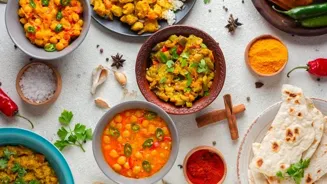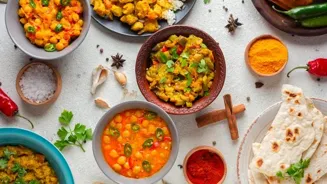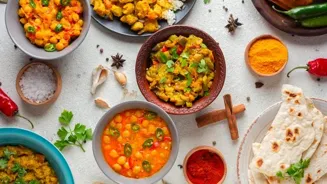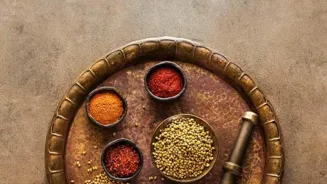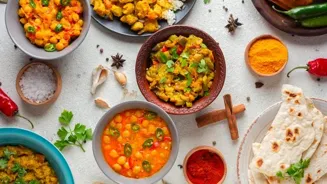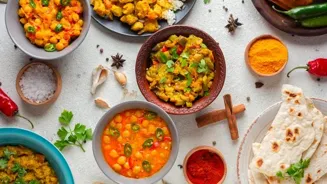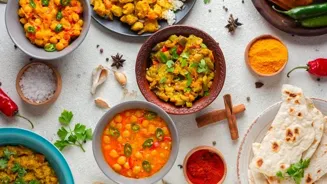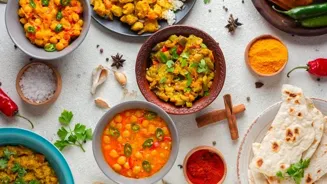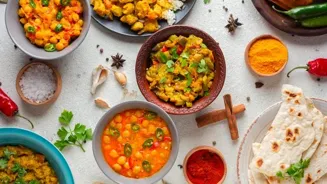Discover the magic of Indian flavors in your daily meals. Learn 5 easy tips to spice up your dishes effortlessly!
MUMBAI: Tired of the same old boring lunches and dinners? Want to add some zest and excitement
to your plate? Look no further than your own Indian culinary heritage!
Incorporating Indian flavors into your daily meals is easier than you think, and it's a fantastic way to boost both the taste and the nutritional value of your food. You don't need to spend hours slaving away in the kitchen or be a master chef.
With a few simple tweaks and tricks, you can transform ordinary dishes into flavorful Indian-inspired delights. Here are five easy ways to infuse the magic of Indian spices and ingredients into your everyday cooking:
The Power of Spices: Your Secret Weapon
The heart and soul of Indian cuisine lies in its vibrant and complex symphony of spices. Don't be intimidated by the long list of spices you see in Indian recipes. Start small and experiment with a few basic spices like turmeric, cumin, coriander, and garam masala.
These four form the foundation of countless Indian dishes. Turmeric, with its bright yellow color and earthy flavor, is known for its anti-inflammatory properties. Cumin adds a warm, earthy note, while coriander provides a citrusy, fresh aroma.
Garam masala, a blend of warming spices, adds depth and complexity to any dish.
How to use them? Add a pinch of turmeric and cumin powder to your scrambled eggs in the morning for a healthy and flavorful start to your day.
Sprinkle coriander powder on your salads or roasted vegetables for an extra layer of flavor. Mix garam masala into your soups, stews, or even your pasta sauce for an instant Indian twist. Don't be afraid to experiment and find the right combination that suits your taste.
Remember, a little goes a long way when it comes to spices. Store your spices in airtight containers in a cool, dark place to preserve their flavor and aroma. Buying good quality spices is important, as they’ll have a more pronounced and authentic taste.
Tadka Time: Tempering Your Way to Flavor
Tadka, also known as tempering, is a technique where spices are briefly heated in oil or ghee to release their aroma and flavor before being added to a dish. This simple step can dramatically enhance the taste of your food.
Common spices used in tadka include mustard seeds, cumin seeds, dried red chilies, and curry leaves. The hot oil helps to bloom the spices, releasing their essential oils and creating a fragrant and flavorful base.
To make a tadka, heat a tablespoon of oil or ghee in a small pan.
Add your chosen spices and let them sizzle for a few seconds until they release their aroma. Be careful not to burn the spices. Immediately pour the tadka over your dish, such as dal, soup, or vegetables. The sizzling sound and the fragrant aroma will instantly elevate your meal.
You can even add tadka to your plain rice or yogurt for a quick and easy flavor boost. Experiment with different spice combinations to create your own signature tadka.
Lentils and Legumes: A Protein Powerhouse
Lentils and legumes are a staple in Indian cuisine and a fantastic source of protein, fiber, and essential nutrients. Incorporating them into your daily meals is a healthy and delicious way to add an Indian touch. From simple dals to hearty curries, lentils and legumes offer endless possibilities.
There are various types of lentils available, such as masoor dal (red lentils), toor dal (yellow lentils), and moong dal (split green gram), each with its own unique flavor and texture.
Try adding cooked lentils to your salads, soups, or stews for extra protein and fiber.
Make a simple dal with your favorite lentils and serve it with rice or roti (Indian bread). You can also use lentil flour (besan) to make pancakes or crepes. Chickpeas (chana) can be used to make chana masala, a popular Indian curry.
Experiment with different lentil and legume recipes to discover your favorites. You can also use canned lentils and legumes for convenience, but make sure to rinse them well before using.
Yogurt: The Cooling and Flavorful Companion
Yogurt is an integral part of Indian cuisine and is used in a variety of ways, from marinades to dips to refreshing drinks. Its creamy texture and tangy flavor make it a perfect complement to spicy dishes. Yogurt is also a good source of probiotics, which are beneficial for gut health.
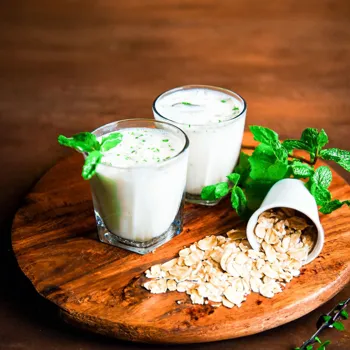
Instead of using mayonnaise or sour cream, try using yogurt as a healthier alternative in your sandwiches, salads, and dips.
Make a simple raita by mixing yogurt with chopped vegetables like cucumber, onion, and tomato, and adding a pinch of salt and pepper.
Use yogurt as a marinade for paneer (Indian cheese) or vegetables before grilling or baking. Blend yogurt with fruits and spices like cardamom or saffron to make a refreshing lassi. You can also use yogurt to thicken your soups and stews, adding a creamy texture and a tangy flavor.
Remember to use plain, unsweetened yogurt for maximum versatility and health benefits.
Herbs: Freshness and Flavor in Every Bite
Fresh herbs are often used as a garnish in Indian dishes, adding a burst of freshness and flavor. Common herbs used in Indian cooking include cilantro (coriander leaves), mint, and curry leaves. These herbs not only enhance the taste of your food but also provide essential vitamins and minerals.
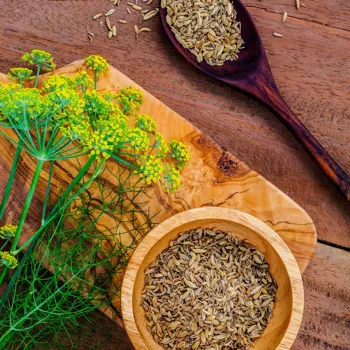
Add chopped cilantro to your curries, salads, and rice dishes for a fresh, vibrant flavor. Mint can be used to make chutneys, raitas, and refreshing summer drinks.
Curry leaves, with their distinct aroma, are often used in tadka and can be added to curries and vegetable dishes.
Growing your own herbs is a great way to have a constant supply of fresh ingredients. You can easily grow cilantro, mint, and curry leaves in pots on your balcony or windowsill. Using fresh herbs will elevate your Indian-inspired meals to a whole new level.
AI Generated Content. Glance/InMobi shall have no liability for the content